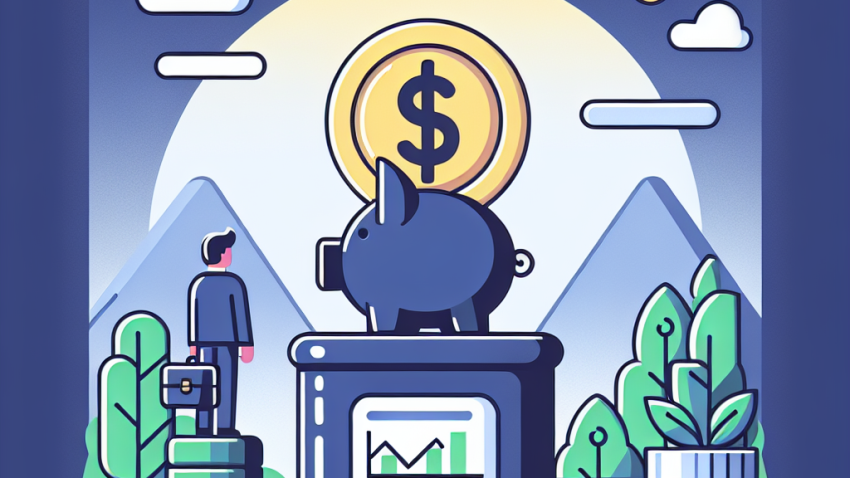
The Budgeting Myth That Nearly Made Me Quit Investing
Why You Don’t Need to Be Rich to Start Investing
Let’s have a heart-to-heart, shall we? If you’ve ever thought investing is only for the rich, the Ivy League educated, or the folks who somehow already own three rental properties and casually talk about “diversifying portfolios” at brunch—this one’s for you.
Hi, I’m Rachel Simmons. I’m not a trust fund baby. I didn’t learn about stock tickers over caviar. I learned about money by overdrafting my bank account… more than once. But here’s what changed everything: I stopped waiting until I “had money” to start investing. That switch flipped my financial game—and it can flip yours, too.
The Myth That’s Costing You Thousands
One of the biggest financial lies out there is the idea that only wealthy people invest. That belief is not just wrong—it’s financially dangerous. Why? Because the earlier you start investing, the more powerful your returns can become over time thanks to something magical called compound interest.
Imagine planting a tree when you’re 25. Even if it’s a tiny sapling right now (read: your $25 investment), in 20 years, it’s giving you shade, fruit, and making your neighbors jealous. Wait 10 more years to plant the same tree? You’re behind—no matter how big your shovel is.
Let’s Talk Compound Interest—The Beyoncé of Financial Tools
Compound interest means your money earns interest, and then that interest earns more interest. It builds on itself, growing stronger over time. Think rolling a snowball down a hill—it starts small, but by the bottom? It’s basically a financial avalanche.
Even small, consistent investments can turn into big wins over time. For example:
- If you invest $100 per month starting at age 25
- With an average annual return of 7% (totally doable in a low-cost index fund)
- You could have around $240,000 by the time you’re 60
Cool, right? Now let’s talk about how to actually do that—without needing a six-figure salary, Wall Street connections, or even a briefcase (unless you’re into briefcases).
Start Where You Are. Use What You Have. Do What You Can.
You don’t need thousands of dollars to open an investment account. In fact, many platforms today let you begin with as little as $5. Yep. Five bucks. That’s less than your half-sweet oatmilk latte.
Here’s How to Get Started on the Cheap:
- Choose a platform that welcomes beginners.
Look for apps or brokerages that offer: - No account minimums
- Fractional shares (so you can buy pieces of expensive stocks)
- Commission-free trading
- Automate your contributions.
Set a recurring date—even if it’s $10 a week. Set it and forget it. - Invest in index funds or ETFs.
These give you exposure to dozens or hundreds of stocks at once, giving you built-in diversification. They’re also beginner-friendly and often low-cost.
Bonus tip: Nobody says you have to invest only once you’ve “paid off all your debt.” It’s all about balance. Think: pay off high-interest debt while building small investments. Financial independence isn’t a linear path—it’s a strategic juggling act.
Mindset Matters More Than Money
When people say “I can’t invest because I’m broke,” I get it. I’ve been there. But sometimes what’s stopping us isn’t our financial situation. It’s a mindset of scarcity.
Let me be real with you. I started investing when I still owed money on my credit card and lived in a rented studio close enough to my neighbors to hear their Spotify ads. But I found ways to carve out small contributions—just enough to prove to myself that I could do it. And guess what? That shift empowered me to make bigger financial moves later.
You’re Not Too Late. You’re Not Too Broke. You’re Not Too Anything.
There’s no finish line you “missed.” There’s no magical dollar amount where investing suddenly becomes allowed. The only requirement is this: You care enough about your future to start now.
Let me introduce you to what I call the “$10 Shift.” If you can find $10 a week to invest, you’re participating in wealth building. That’s $520 a year. That habit alone will put you ahead of most people who still think investing is only for 1%ers. And that’s something to be proud of.
You’re Building More Than Wealth
Here’s the best part: when you start investing (even small), you’re not just building a cushion of cash—you’re building confidence, discipline, and long-term security. That’s financial independence, baby. And it starts with action, not with a perfect bank balance.
So no, you don’t need to be rich to invest. You need to be resourceful. You need to say, “Hey, self—I deserve to own a piece of the pie too.” Because you do. You’re not just meant to work for money your whole life. You’re meant to make money work for you.
Let’s Recap: What You Need to Start Investing Today
- A willingness to learn
- A few dollars
- A commission-free investment platform
- Consistency over time
That’s it. No suits. No spreadsheets. No yacht club membership required.
If you’re tired of watching from the sidelines while wealth grows around you, just know: you can start building your future now. I’m rooting for you like a mom in the front row of a school play. You’ve got this.
Next Steps
If you’re ready to take the leap, start by checking out platforms like Vanguard, Fidelity, or beginner apps like Stash, SoFi, and M1 Finance. And remember: education is part of the process. Read, ask questions, and take baby steps.
Have questions or want more guidance? Reach out here—I’m listening.
And if you want to know more about the mission behind Financeone and our commitment to empowering everyday investors, learn more here.
Now go out there and claim what’s yours. Your financial future isn’t waiting for perfection. It’s waiting for you to start.









Leave a Reply